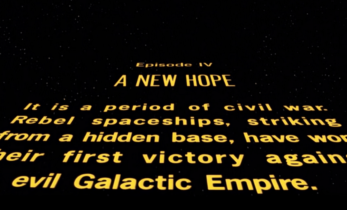Greater than 6 minutes, my friend!
Five trends that defined the translation industry in 2017
The year is almost over, time to reflect on what happened in the translation industry in 2017. While the general trend of decreasing rates and technological improvements has continued to evolve over the last two years, the industry saw some remarkable developments as well. In this last blog post of 2017 I list five trends that can be seen as defining what the translation industry underwent over the year.
State of the translation industry
Traditionally, the end of the year is a good moment to reflect on what passed and to look forward somewhat. In the past years I published a couple of “official” states of the industry, shedding light on what happened in the year that has passed. All these reports highlighted a couple of remarkable trends that are continuing to evolve – and to some extent cause some disruption in the translation industry. Examples of such trends are the growth of automation, and the steady and sometimes increasing pressure on rates. This translation industry ‘report’ does not bring a different message. There is much going on in the translation industry at strategic and technological levels. At the same time there are a couple of things that seemed to be more apparent in 2017 than in previous years. These trends are listed below, not necessarily in order of importance.

1. Mergers and acquisitions
In the past year a couple of bigger and smaller translation agencies all over the world joined forces and finally entered into a merger or were acquired by other agencies. 2017 saw RWS acquiring Moravia, French-based translation agency Technicis Group acquiring Arancho Doc, while Arancho Doc itself went shopping in Milan earlier this year. These are only a few examples of translation agencies acquiring some of their competitors. According to the comments made during the acquisitions, the translation agencies mostly invest their funds in other agencies to grow their client base or to strike out in an increasingly competitive environment. Sometimes the agencies also acquire new (and disruptive) technology providers for the translation industry, like Concorde acquired cloud translation platform LiveWords, according to Slator. A short analysis seems to make clear that it is mostly mid-sized translation agencies that follow the acquisition path. On a freelance-translators level there are no mergers or acquisitions whatsoever, although translators certainly seem to join forces and try to connect with others in order to share work and collaboration opportunities. The mergers and acquisitions in the translation industry might offer some benefits to freelance translators that are working on acquiring and acquired business already as their exposure to project managers is increased.
Mergers and acquisitions are not new in the translation industry, but it seems companies are more prone to an acquisition. The year past also saw the conclusion of acquisitions that had started in 2016, with offices re-branding and processes merging.

2. A growing emphasis on MT in all its diversity
If 2017 proved anything, it is that machine translation will be big in the future. The year marked the rollout of Google Neural Machine Translation (GNMT) in some languages, as well as the introduction of a machine translation technology by Amazon, and the Apple researching machine-translation technology. All the claims about the state of machine-translation technologies spark debate among professionals about the actual state of the technology and whether MT is a hype or not. No matter the state of the technology and the debates, every mention of machine-translation technology increases the emphasis on what is going on. More and more translation agencies are investing time and funds in technologies in order not to miss that train. At the same time, translators sometimes feel forced to dive into the ins and outs before it is too late (a claim that is heard among many advocates of MT) or because they see a rise in post-editing jobs coming from clients. Even end clients are investing in machine-translation technologies to speed up their translation processes, but mostly to lower their costs in the future. There are already clients in the furniture and mechanical industries building their own translation engines to reap low-hanging fruit.
The increasing investments in research, infrastructure, and resources will continue to define the state of the translation industry and it is expected that even more companies will jump on the train. So machine translation is growing bigger but the end of the growth is still nowhere near finished.

3. Even lower rates – and a countermovement
Influenced by many factors like the growth of translation volumes, the improvement of machine translation technologies, and the demand to increase margins, end clients and translation agencies alike are continuing to demand lower rates. It is difficult to predict whether an all-time low has already been achieved or will be achieved, but it seems that freelance translators are collectively starting to feel fed up. Companies demanding rates as low as $ 0.04 for a language pair with an average word rate of $ 0.14 are starting to outplay themselves as translators raise their voices and stop working for these rates any longer. At the same time companies and end clients still have control over the prices and can ask translators to bend or to burst. Despite their frustrations, translators are still not able to join forces and agree not to work for low wages. A countermovement is growing, but chances are that translators ultimately need to lower their rates in order to continue to receive work.

4. More but smaller jobs
The time when a “large job” was defined as a job with 20,000 or more words seems something from a far distant past. While the numbers of words in the translation industry seems to grow, jobs themselves are increasingly becoming smaller. Translation agencies are even talking about large jobs now when the word count is about 2,000 words. While this downward trend in job size does not have to be negative and often will be compensated for by an increase in the number of jobs, the notion of “large” jobs sometimes has an important implication. In the translation industry, “large jobs” are often synonymous with “lower rates” and downsizing the meaning of “large” in “large jobs” therefore means lowering the threshold for deductions in translation fees. It seems the concept of large jobs is impacted by a kind of meaning inflation and current forecasts do suggest that “larger jobs” will continue to decline in size in the foreseeable future.

5. CAT tools growing closer and closer
There was a time when CAT tools were readily distinguishing themselves by their features, some specializing in handling certain file types and others borrowing their existence from the fact that they contained ground-breaking technologies. Those differences are fading away, given that a new build of major CAT tools is released every few months, containing improvements and new features that are bridging the gap between competitors. CAT tools nowadays seem to thrive by the very existence of a group of fans, believers, or advocates who do not want up to give their favorite tool, while under the bonnet CAT tools are still hugely different, with the features and functions for translators remaining similar. The introduction of disruptive cloud platforms and technologies, like adaptive MT by Lilt, are being rolled out to desktop platforms as well, with SDL adding Adaptive MT to its product line and SmartCat introducing Adaptive MT with saying “It’s Lilt Time!“. It is only a matter of time before cloud tools and computer-based CAT tools have the same features and functions, and until a new platform emerges that introduces new disruptive technologies and concepts.
What will 2018 bring for the translation industry?
Predicting the future is quite a difficult task for a translator. The industry is in full swing and there is much going on. Yet some general lines can be drawn. The overall future of the translation industry seems bright, with many forecasts predicting a steady rise in the total amount of work, and more and more companies investing in translations. That said, it does not mean that the future of translators is equally bright. The increasing amount of work is still accompanied by a demand to decrease rates, while other companies investing in translations do not consider quality at all and look for the cheapest product. Neural machine translation will grow more as companies invest more of their budgets into disruptive and ground-breaking technologies. Agencies and translators alike are being forced to jump on the train to a greater or lesser extent as more and more traditional jobs become post-editing jobs. Major releases of CAT tools will contain fewer ground-breaking technologies but more copies and own versions of competitor’s technologies. And finally, more translators will stand up to defend their rates and try to join forces or strike out to stop the rat race.





I do agree that CAT tools were closer during 2017. I started learning and using Trados last July and I could not agree more. I started to work as a freelancer for 4 months now and YES most of the projects are small and I hardly had any big projects. This was a great reflection on 2017 and I happy to read it as I start the new year.
Great Article Peter.
I have a question which is somewhat related to point no. 3 in your article. Some of my colleagues, due to this “lowering the rate” phenomenon occurring quite regularly in our profession, are deciding to move to other countries like USA, Canada or those in Europe, in order to get good rates.
But as freelance translators all over the world are somewhat pressured to reduce rates, not to mention the improved quality coming from MT year by year, would this move be logical in the long run?
Hi Priyank,
Thank you for your comment. As dropping rates are a worldwide trend I don’t think moving to elsewhere would improve the situation. Instead consider looking for other clients and focusing on clients that pay better. That will do a lot, whatever your location might be.